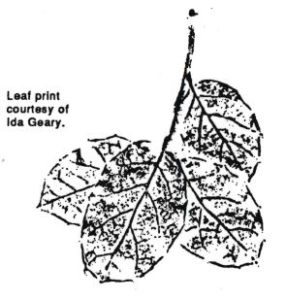Oaks ’n’ Folks – Volume 9, Issue 1 – April 1994
Introduction
Are oak trees an important component for sustaining ecosystem productivity in California oak woodlands? A research project sponsored by the Integrated Hardwood Range Management Program examining nutrient cycling is showing that oak trees play a major role in maintaining the nutrient status of these ecosystems. Each year, a typical blue oak (Quercus douglasii) will return approximately 2, 1, 2.5, and 1.8 kg of nitrogen, phosphorus, calcium and potassium, respectively, to the soil surface in the form of litterfall (leaves, twigs and acorns) and canopy throughfall (canopy leaching). While these values may appear low, multiplying by all the oaks in a watershed results in very large quantities of nutrients.
 Nutrients contained in litterfall are slowly released by microbial decomposition resulting in replenishment of nutrient pools beneath the oak canopy. Concentrations of major nutrients in the soil solution beneath an oak canopy are 2-10 times higher than in soil solutions in adjacent grassland soils indicating a more nutrient rich soil environment beneath the tree canopy.
Nutrients contained in litterfall are slowly released by microbial decomposition resulting in replenishment of nutrient pools beneath the oak canopy. Concentrations of major nutrients in the soil solution beneath an oak canopy are 2-10 times higher than in soil solutions in adjacent grassland soils indicating a more nutrient rich soil environment beneath the tree canopy.
The distribution of roots within the soil profile also plays an important role in nutrient dynamics. At the Sierra Foothill Range Field Station, annual grasses were observed to have the majority of their roots in the upper 30 cm of the soil profile while oak roots were found primarily at depths greater than 30 cm. In grassland soils, nutrients leached below the shallow rooting zone of annual grasses are removed from the ecosystem into stream or ground waters. In contrast, the deeply rooted oak trees are able to capture the majority of the nutrients before they are lost from the ecosystem by leaching. Therefore, removing oak trees from the ecosystem will result in a gradual loss of nutrients from the ecosystem through leaching losses.
This loss of soil nutrients is confirmed by studies examining forage production following oak tree removal. These studies consistently show increased forage yield immediately following tree removal due to removal of competition for nutrients, water, and light by the oak trees. However, forage yields show a steady decline following the initial peak and fall below pre-tree removal levels after approximately ten years. This indicates that the effects of oak trees on the soil nutrient status are short-lived following their removal and that nutrient reserves are quickly depleted by leaching.
Soils beneath the oak canopy are also characterized by having significantly higher organic matter concentrations due to annual litterfall returns (approximately 7000 kg/ha beneath blue oak trees). In addition to the positive effect of organic matter on the soil nutrient status, higher organic matter concentrations lead to lower soil bulk density and greater porosity. This in turn provides increased infiltration rates for rainfall which reduces surface runoff, water erosion and stream water sediment loads.
In conclusion, oak trees play a critical role in sustaining ecosystem productivity through their role in cycling nutrients to the soil surface, preventing nutrient leaching losses, increasing water infiltration, and attenuating water erosion and stream sediment concentrations.
Randy Dahlgren
prepared and edited by John M. Harper, Richard B. Standiford, and John W. LeBlanc
Azərbaycanda onlayn kazino BetAndreas Qeydiyyatdan keçin və qazanın
